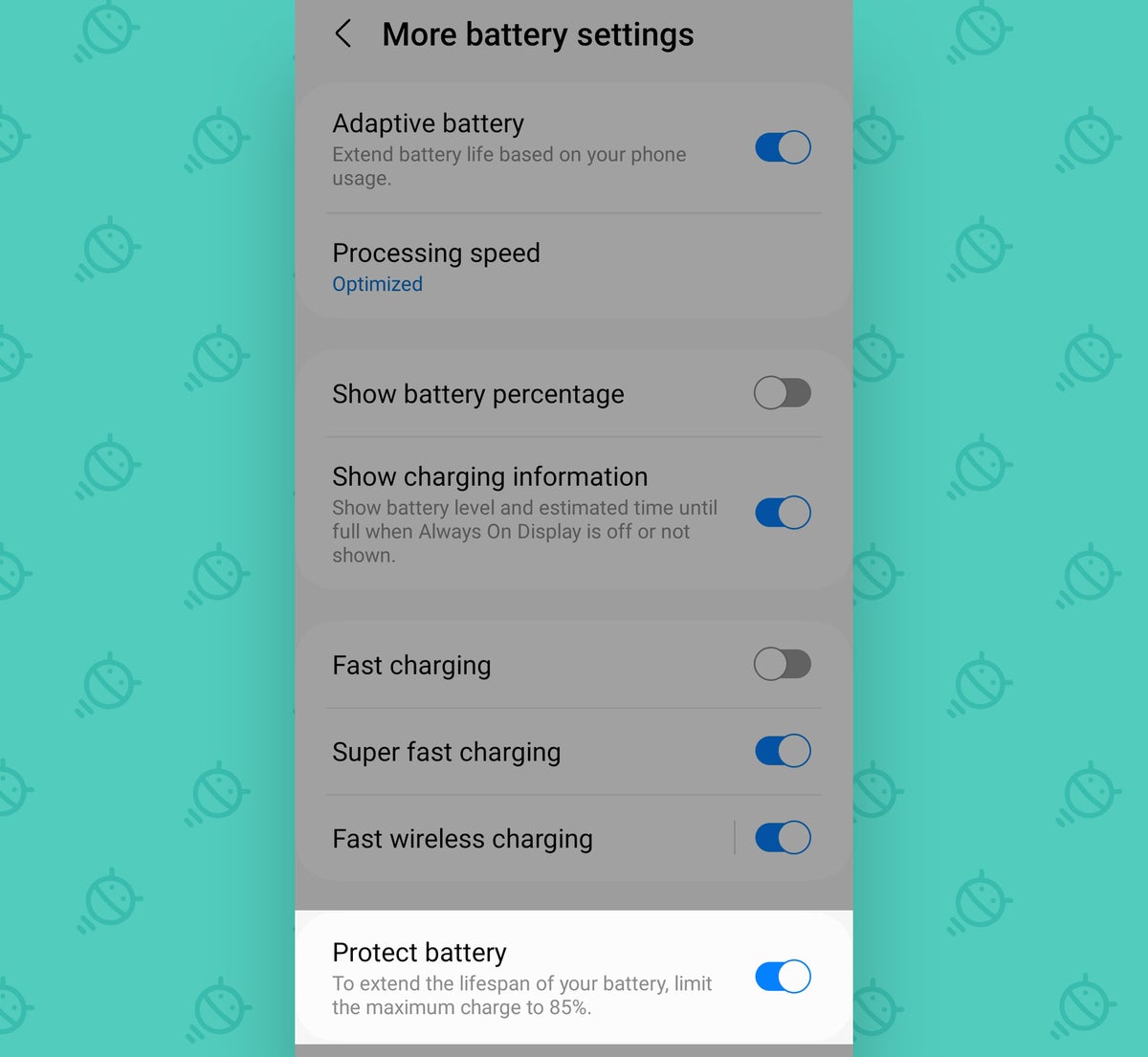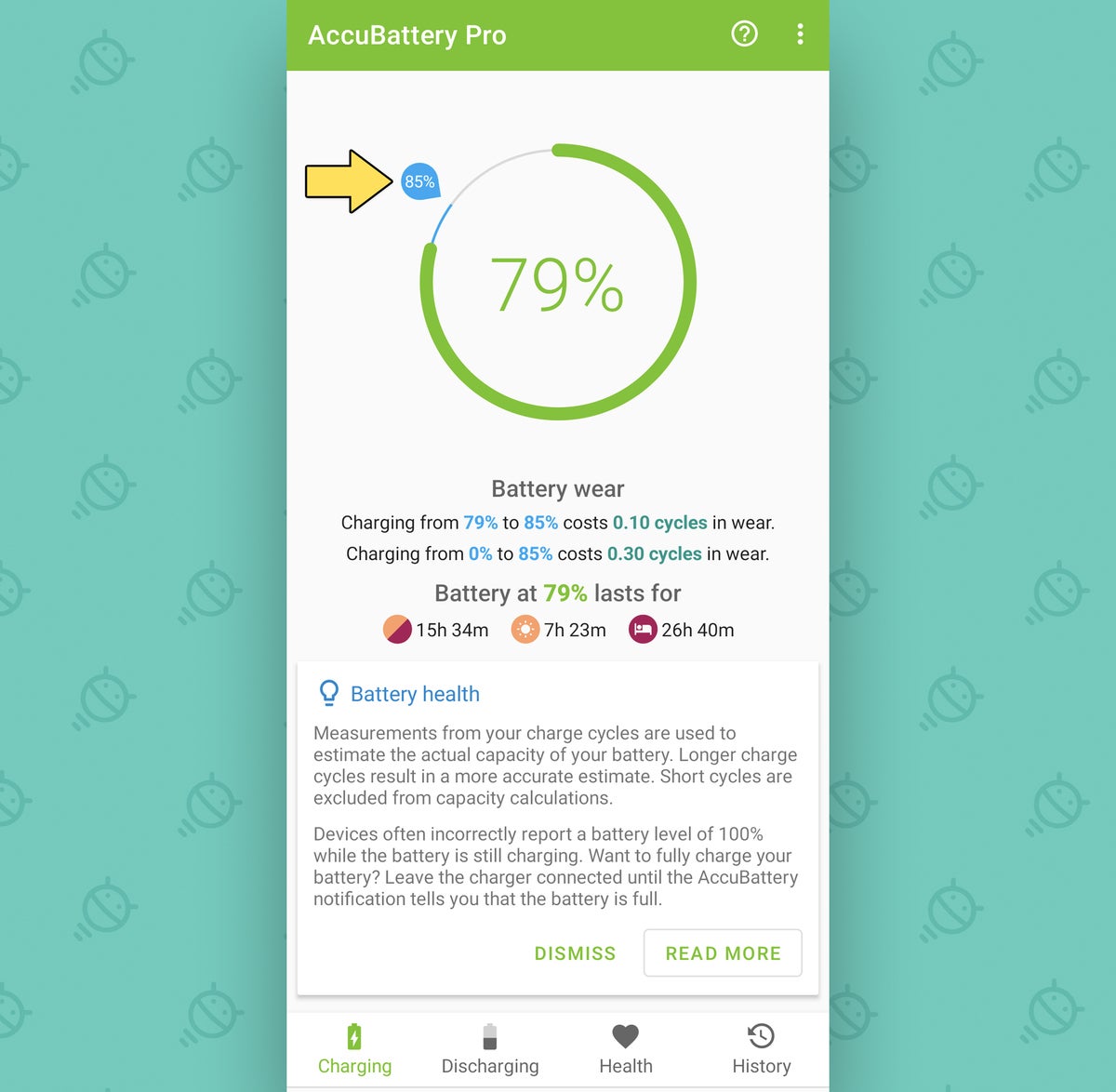If there's one question I hear more than any other here in the land o' Googley matters, it's how to grant oneself the invaluable gift of better battery life on Android.
Hey, we all struggle with stamina some days. Our favorite phones are no different.
Here's the good news, though: While the notion of achieving better Android battery life may sometimes seem like rocket science, it's actually just regular science — and the secret to making it happen actually isn't all that difficult at all, once you understand the mechanics around it.
In fact, all it requires is a touch of careful planning.
Let me explain.
[Get Googley goodness in your inbox every Friday with my free Android Intelligence newsletter. Three fresh tips every Friday — straight from me to you!]
The Android battery life mechanics
The main thing to know about your phone's physical battery is that it's a limited resource that loses capacity over time.
That's an inherent quality of that type of technology, unfortunately, and the same is true no matter what type of mobile device you're using: The more you use it — and, specifically, the more you stress it via ongoing charging — the less power it's able to hold, and thus the worse battery life it gives you over time.
That's at least in part why even a year-old phone often lasts for noticeably less time than a brand new out-of-the-box model. But once you're aware of that unavoidable reality, you can take some smart and relatively simple steps to address it.
And here's the easiest and most effective one of all: Stop charging your phone all the way to 100% and letting it sit on the charger indefinitely.
Ask most any battery expert, and they’ll tell you the same thing: The fastest way to shortening your battery’s life and making it perform more poorly is regularly charging it all the way to full — or, worse yet, keeping it plugged in and maintaining that fully charged state for extended periods.
There’s a bunch of technical gobbledygook behind that, but the basic idea is that the higher your charging state, the faster the electrolytes — the components that make the battery work (which, fair warning, are far less tasty than the kind mixed into Gatorade) — degrade. And the more they degrade, the less charge they’re able to maintain.
In human terms, the takeaway is this: Letting your phone go super-high or super-low in charge is bad, mmkay? Instead, what you want to do is stay in the middle as much as possible.
And luckily, that's almost shockingly easy to do. You just have to take a teensy shred of time now to make some simple changes to your charging habits, and you'll set yourself up for a longer-lasting battery for months or even years to come.
Your better Android battery life options
All right — enough about the mechanics. Let's get into the actual answers, shall we?
We'll tackle three separate categories and associated options for boosting your Android phone's battery life and setting yourself up for lasting stamina success:
1. For the Google Pixel owners among us
First, if you've got a Google-made Pixel phone from 2019 or later — so the Pixel 4 model and up, in other words — take 20 seconds now to dig up your device's Adaptive Charging setting:
- Open up the Battery section of your system settings.
- Tap “Adaptive preferences.”
- Find the line labeled “Adaptive Charging” and make sure the toggle next to it is in the on and active position.
 JR
JRThat'll allow your phone to take a slow ‘n' steady approach to charging when it knows you're gonna have it plugged in for a while, like during the overnight hours. That way, at least in theory, it'll reach the 100% mark at the end of your charging period instead of getting there quickly and then continuing to maintain that full-charge state with ongoing power pushing.
Now, notably, this feature originally worked only when you charged your Pixel between 9 p.m. and 4 a.m. and you had an active alarm set for somewhere between 3 a.m. and 10 a.m. That's a pretty significant limitation, to say the least.
More recently, some Pixel users have noticed the system being far more flexible and working in the same way even when an alarm isn't set, based solely on typical charging patterns. The official documentation for the feature hasn't been updated to reflect that change, though, and it isn't entirely clear how widely available it might be at this point.
Either way, this setup is a smart start — and leaning on it is absolutely a good first step. But if you really want to take your Android battery life to the max and allow for the best possible battery health and thus best possible stamina over the long haul, you'll want to keep reading (to number 3 in this list, specifically).
2. For the Samsung Galaxy gang
Got a reasonably recent Samsung Galaxy-flavored Android device? Your phone has a similar sort of system in place that can automatically limit charging, though with a bit of a different twist:
- Head into your system settings and search for the word battery.
- Find the option labeled “Protect battery” and tap it.
- Turn the toggle on the line labeled “Protect battery” into the on position.
 JR
JRThat'll stop your phone from charging anytime it hits the 85% mark, which is a sensible limit for long-term battery health and maximum ongoing stamina. That does mean you'll have a little less battery power to work with on a day-to-day basis, but as long as you can make that work — or even do a midday top-off, if you need to — you'll get better battery life over the lifespan of your device as a result.
That being said, this setup still isn't perfect, as it will still continuously kick in and keep charging your phone anytime it dips below that 85% level. So for the most advisable all-around option, you might want to consider it in conjunction with our next bit o' battery-boosting guidance.
3. For anyone and everyone using Android
Even if you're already using a battery-saving system from Samsung, Google, or any other Android phone-maker who offers a similar sort of setup, you'd be well-advised to consider this last step as a stamina-protecting supplement. And if you're using a phone that doesn't offer any sort of built-in battery protection feature, you'll definitely want to do this:
- Install an excellent app called AccuBattery onto your Android phone of choice.
- Open the app up and, on its main Charging tab, look for the blue slider floating off the percentage circle at the top.
- Slide that little blue flag left or right to land on the value you want. I’d suggest starting at 90%; if you find that works okay for you, you can then inch your way down closer to 85% or even 80% and see how you do.
 JR
JRWith that step finished, AccuBattery will now sound an alarm anytime your phone reaches the level you set — and that'll be your indication that it's time to take it off the charger.
(AccuBattery is free to use for this purpose, by the way, and it doesn’t require any special permissions. If you want to remove ads within the app’s interface, unlock some extra features, and support the developer, you can opt to make a one-time in-app upgrade of $4 (or more) to bump up to the pro version. But you don't have to do that to make this work.)
Now, the manual part of this process is a minor hassle, admittedly — but once you get used to it, it really isn't that big of a deal to manage. The easiest way is to get in the habit of charging your phone either immediately before bed or first thing in the morning, as soon as you wake up. And, again, you can always do a midday top-off to get through the day and avoid letting your battery level drop too low (another stamina no-no, remember?).
If you really want to go all out, there are also some physical accessories that can manage this for you and essentially cut off the power for every charge completely once a certain battery level's been reached. That's a fine enough option, if you don't mind dropping the extra dough and charging only in a spot where that specific apparatus is available. But I'm telling you: Taking your phone off the charger when it hits a certain point is something you'll get accustomed to quickly, provided your schedule supports it.
However you go about it, the ultimate ideal is to keep your phone between 20% and 80% of its battery capacity as often as possible, without any extended time sitting on a charger and constantly being fed fresh power. The same is true whether you're using an Android phone or any other type of battery-dependent gizmo.
And with any combination of the tactics we just went over, you'll be able to make that happen — and enjoy better Android battery life for longer than ever as a result.
Get expert-approved advice in your inbox with my Android Intelligence newsletter. Three new experience-enhancing tips every Friday!

